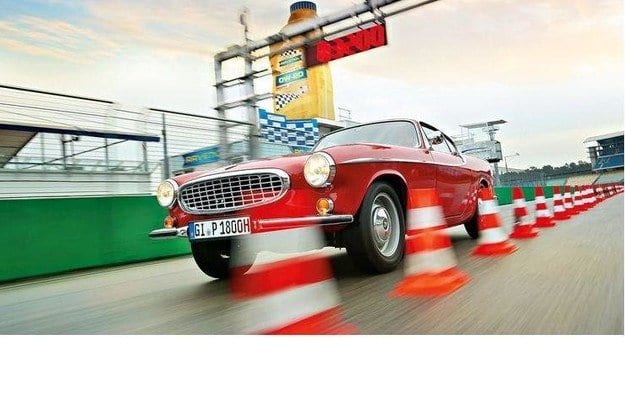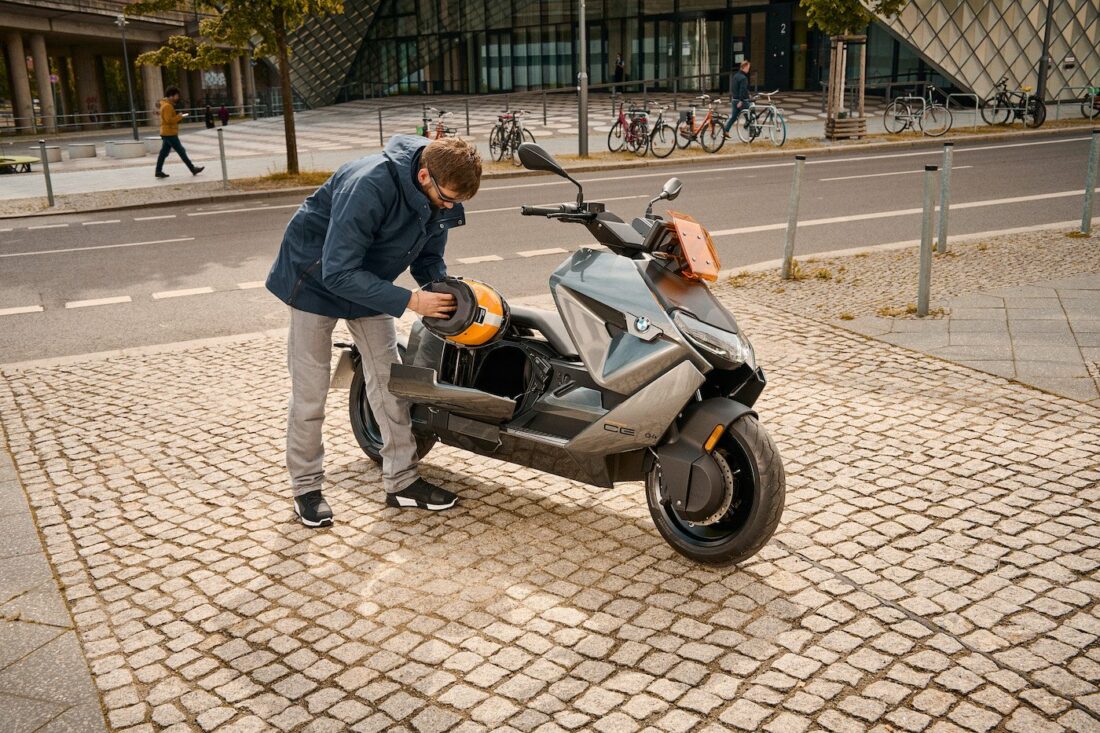
Test drive Volvo P1800 S: like in a Swedish house

At the origin of the idea of Volvo as a bearer of strength, safety and comfort
It's time to add something from the wonderful fairy world to our test series "Veterans" and invite a movie star from Sweden. When the Volvo P1800 S arrived in Hockenheim, Baden became a Swedish village from Astrid Lindgren's book.
The last weeks of March are not the best time for weather optimism. On that misty morning, my own prediction of the coming light spring rain was simply washed away by the torrential downpour. And because over time, until you realize that the switch labeled “Fläkt” controls the ventilation and defrost functions, the side window remains ajar, the cabin also drizzles, but the windows stop sweating. Windshield wipers are an example of stunning mechanics, and they certainly have wonderful talents. However, cleaning the windshield is not one of them, and now their feathers smear the rain senselessly and phlegmatically on the window. As long as things get better.
To feel at home, you have to be somewhere earlier at home. Some take a long time to figure out how deeply ingrained this sense of home is. And we just need to get into the elevator and go down to the second underground level. There, in the dim light of the garage, the Volvo P1800 S awaits us.
By the way, such a car is the record holder for the number of kilometers traveled. Herv Gordon drove with his pet more than 4,8 million kilometers. So it makes sense to choose this Volvo as your home. When it hit the market in 1961, the company's factories were still producing the 544, that is, the Amazon, and its first Duett station wagon. This is the era when the feeling of Volvo is born, which today is carried by each of the models of the brand - the feeling that the car can be your home thanks to its reliability, durability and unwavering comfort. We go, the Swedish steel doors lock tightly and isolate us from everything outside. Maybe that explains why Volvo convertibles have never done well - such a mixture here is out of place, something like a submarine with a sun deck.
Volvo knew this way back in 1957 when they began developing the successor to the P1900 Sport Cabrio, whose commercial success, after two years of production and a total of 68 units, was more than modest. The design of the new coupe (the ES version for the Shooting Brake will not appear until 1970) was developed by Pele Peterson, who worked for Pietro Frua in Turin. The P1800 uses the Amazon platform, so the coupe needs to be solid and reliable. You should. But Volvo decided to install a car from Jensen Motors. Steel bodies from Scotland are shipped by train to the West Bromwich plant. None of Volvo's quality requirements can be met without problems. 6000 units and three years later Volvo moved production to its own plant in Lundby near Gothenburg and renamed the P1800 S: S to Made in Sweden.
The car that nails you
But before we really hit the road, we need to mention a few things about the effort we put in to get to the veteran. Call Volvo:
Is it possible for "Veterans to qualify"
"We ship red P1800 S."
The car arrives on a sunny March Monday and goes straight to the track to measure the flow, which requires 10,2 l / 100 km and three lead injections.
So, now we will attach to the massive metal bracket of the center tunnel a heavy mechanism for fixing a static belt with a lock, with which it would be possible to lift the entire machine. The feeling is exciting, but also somewhat safe. With the one-inch-long vacuum cleaner removed, the 1,8-liter four-cylinder engine starts at the first turn of the key and idles so erratically you fear the sound will knock the plaster out of the garage columns. In first gear, we release the clutch, the body bounces and, dragging a plume of noise, goes up to the roller shutter portal, which slowly winds up. We go out right in the middle of bad weather.
There are cars for fine weather and there are Volvo cars that only show their true qualities in the midst of a storm. Then the feeling of travel will be as pleasant and cozy as Astrid Lindgren's sunny day at Bulerby. Right now, rain is hitting the P1800 S. In a standard calm that is rarely seen in 52-year-olds, it takes us onto the freeway and fights bad weather there until it gives up.
The clouds build up and our Volvo continues at a comfortable 120 km / h on the right-hand lane of the A 6 motorway, which climbs westward through the Kraichgau hills. Only on slightly steeper slopes do you need to momentarily squeeze the clutch and squeeze a thin lever that protrudes slightly from the steering column. This disengages the economical overdrive and the engine continues to run in fourth gear from the four-speed "short" gearbox. While on Amazon the gears have to be adjusted with a long cane lever, the gears of the M41 transmission in the 1800 S are shifted using a short lever on the center tunnel.
It's still early when we arrive at Hockenheim. Short stop for refueling at a gas station and main wash. Then we enter the Motodrom on the other side. And since everything is there - the classic Volvo, the track, the weather and the possibilities - after the weigh-in we do a few laps on a slightly wet track. “Oh, this thing goes surprisingly well,” you think as you steer your body through corners with the thin steering wheel. The steering combines low precision with surprisingly high turning forces. And down in Zenk, this Volvo even serves the rear - but only at low speeds, and at speeds over 30 km / h it starts to slide, not turn.
How are you, Simon?
We return to the box, where we measure the interior, the turning diameter (modest 10,1 m), then we connect the cables of the measuring electronics. When the GPS system connects to the satellite, we again leave by car. First, we find a slight deviation of the speedometer (three percent), then a rather significant noise level (up to 87 decibels, it's still so noisy in the cockpit of a propeller-driven aircraft).
The track is already dry, it is possible to carry out brake tests. Accelerate to a speed of just over 100 km / h, press the button and stop with full force, being careful not to cross the blocking limit. On average, over all attempts, our Volvo stops after 47 meters. This corresponds to a negative acceleration of 8,2 m/s2, which is not bad for a car that has been on the road for more than half a century.
In the hiatus, as we approach the beginning of rights, we add that seven of those years our Volvo has survived as a movie star. Roger Moore in Simon Templer (original Saint, Saint) rode the P1800 for 118 episodes due to the Jaguar not giving the E-Type.
We are already on the way to measuring acceleration. At first, the Vredestein tires creak briefly as the Volvo coupe rushes forward. From 2500 rpm, the voice of the engine changes from tense to outraged. However, the slightly reinforced unit accelerates the 1082 kg coupe to 100 km / h in 10,6 seconds, and the distance to 400 meters is reached in 17,4 seconds. Now it's time to position the pylons between which the P1800 will slalom and lane change – clumsy and heavily sideways, but neutral and not whimsical.
Finally, the interior in the box is slowly cooling down, and the sun's rays are falling on the chrome rear fins. But look, the wind has hung heavy clouds on the field. Isn't a storm forming? It would be even more beautiful.
Text: Sebastian Renz
Photo: Hans-Dieter Zeifert
